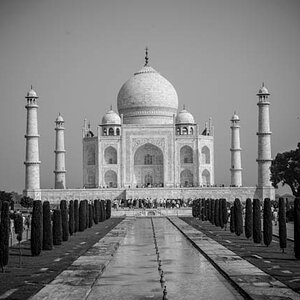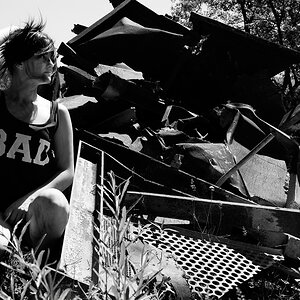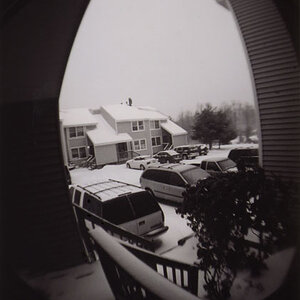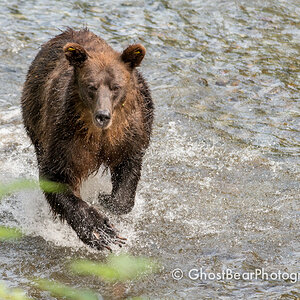- Joined
- Mar 8, 2011
- Messages
- 25,160
- Reaction score
- 9,010
- Location
- Iowa
- Website
- pixels.com
- Can others edit my Photos
- Photos NOT OK to edit
Well if you have Canon already theres good choices aplenty, no matter what budget you have:
- 5D is still a great camera, even if High ISO is really not that good nowadays, but at low ISOs its still excellent and already has the famous Canon colors. Even more than a decade after its introduction, the 5D still has a cult following.
- 5D2 offers a nice boost in Megapixel (22 instead of 12). Not much else though. Last generation that offers viewing screens for better manual focus.
- 6D is excellent and would offer video, too. This would most likely be my personal pick if I would start with Canon now.
- 5D3 would offer good AF, too. The AF of the the previously mentioned cameras is not that great for sports.
- At the upper end of the really good cameras, the 1D X would be expensive, but is also a great camera; possibly find a good deal from someone to switches to the Mk 2?
The newest generation, well the 5D4 gets very mixed reviews. In many respects it hasnt progressed, still doesnt support new card types, the only video format is riddiculous and requires insane amounts of card space, etc. Uuuh, I think one should rather skip that generation and let Canon retry on the next.
Havent bothered to inform myself much about the 1D X Mk 2, sorry. Its super expensive anyway.
OMG no it really isnt.Used film stuff is über-cheap these days.
Sure the cameras are cheap.
The lenses too, if its a dead system, so nobody keeps using them on digital. Doesnt apply for Canon EOS though, these lenses keep the high price since you can still use them on digital. And many people love adapting lenses, which also causes the prices for good lenses to stay quite high even for "dead" systems.
However, film development for sure is really expensive and hard to get nowadays. If you only want to shoot a douzen pictures or so, sure, no big deal. If its more, however, digital gets quickly cheaper.
Seriously theres some swiss guy on the internet who shoots a custom digital 10x8 large format sensor that costs 100k+ CHF to make and he has computed that thats cheaper in the long run than if he would still shoot film.
At very least you should know what you're doing if you really want to keep shooting film.
IMHO entry level cameras are for people who (a) are clueless and have to test the waters first or (b) are not interested in photography and will basically run their camera in green mode, mainly.OK..... so what is an "entry level" camera? What kind of price range?
Their image quality is OK, but they skip on advanced features and dont have many external controls, which depending upon the situation might lead to extensive menu surfing. And they have APS-C sensors - so everything has a 1.5 crop factor, or in case of Canon (who uses slightly smaller APS-C sensors than everybody else) even 1.6x crop factor.
So your 50mm on a Canon entry level is a 80mm equivalent.
The problem with this is - the good lenses, both with Canon and with Nikon, are all available for full frame. Sure you can run them on APS-C cameras, too, but you'll always have the crop factor. So you cant get them for wide angle. And neither Canon nor Nikon have really good wide angle APS-C lenses - decent ones, sure, but not the really awesome ones - so in that area you'll be kinda crippled.
If you need features like video, you'll have to get a modern camera, such as such an entry level camera, though.
If you want a really small and lightweight camera, entry level is also better.
If you actually want the crop factor for getting more range, namely for wildlife, APS-C is a great option too. Wildlife shooters love their APS-C cameras. Theres even pro level APS-C cameras just for that.
But if you only want to take pictures, IMHO its better to get the "pro" or "semi-pro" level cameras, and full frame.
OUCH. The D3400 is a true stinker that even inferior to its direct predecessor D3300. Avoid at all cost.For a DSLR, a Nikon D3400 would be a nice starter body.
I dont know about the "strongly" part but yes Fuji IMHO is the best mirrorless system; excellent lenses, quickly progressing in features, excellent long time support (they even still have firmware upgrades for the first X camera, the X-Pro 1), they recently really good repair ratings over at lensrentals (Zeiss prime lenses are even better though lolz), the new generation of cameras (X-Pro 2, X-T2, X100f, possibly also the X-T20 ?) has really good autofocus now.I strongly suggest Fuji, either a X-Pro 2 or a X-T2.
Word. And they are really cheap now with Canon. A 5D is what now, $300 ?As a film guy, you'll probably appreciate a 'full frame' digital SLR more than the 'crop' size sensors.
The only reason I dont have one is because I'm extremely happy with Nikon and really want as much High ISO performance i can possibly get.
Err, I'm not aware of "too contrasty". I see many unnatural colors from some "modern" lenses, though. But theres only flame wars to be had in that direction. People dont like to be told their expensive, shiny, new lenses look worse than cheaper, older lenses.They're more of an electronic toy for me since the pictures seem too contrasty & unnatural.
Translation: I like spending other people's money.



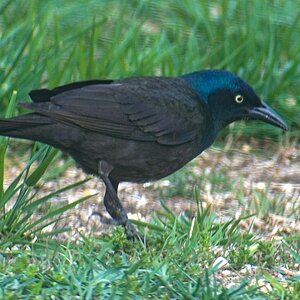
![[No title]](/data/xfmg/thumbnail/37/37606-3c9ffb5906173fa2aa489341967e1468.jpg?1619738148)

![[No title]](/data/xfmg/thumbnail/37/37602-1ef8dbb1c2d0e4ff347ee65d328c3603.jpg?1619738147)

